ZOL2601 Comparative Animal Physiology (ZOL2601)
University of South Africa (Unisa)
All 17 results
Sort by
This is the complete learning unit 2 about blood, the functions of it, and the 2 different types of dissociation curves.
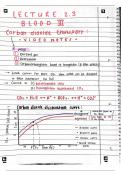
-
Blood (iii)
- Summary • 4 pages • 2023
- Available in package deal
-
 jennikalorist
jennikalorist
-
- R80,00
- + learn more
In this unit the 3 ways of carbon dioxide transport is explained , as well as the carbon dioxide dissociation curve, with the oxygenated and deoxygenated curves. The Henderson Hasselbach equation to calculate pH is part of this unit.

-
Blood (ii)
- Summary • 5 pages • 2023
- Available in package deal
-
 jennikalorist
jennikalorist
-
- R80,00
- + learn more
In unit 2.3, the oxygen dissociation curve is explained, as well as the important factors that can cause the oxygen dissociation curve shift from the left to the right. The chemical reaction of the curve is explained, and factors that affect binding of oxygen with haemoglobin. The different curves are explained and showed in the summary.
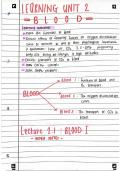
-
Blood
- Summary • 6 pages • 2023
- Available in package deal
-
 jennikalorist
jennikalorist
-
- R80,00
- + learn more
In learning unit 2.1 the following aspects are explained in detail, the different functions of blood as well as the composition of blood. A clear summary of the 4 different respiratory pigments and their functions is included in this unit. Lastly the transport of oxygen in blood is explained.
How animals respire in water and in air.

-
How organisms respire in air part 2
- Summary • 6 pages • 2023
- Available in package deal
-
 jennikalorist
jennikalorist
-
- R85,00
- + learn more
In learning unit 1.4 the following is explained: how birds respire and how air breathing fish respire. It also explains air move in and out of eggs and how the embryo can get oxygen.
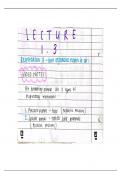
-
How organisms respire in air.
- Summary • 7 pages • 2023
- Available in package deal
-
 jennikalorist
jennikalorist
-
- R85,00
- + learn more
The types of respiratory movements for air breathing animals, and the important respiratory organs are explained in learning unit 1.3. It also explains how certain animals can respire through their skin.
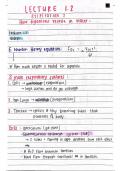
-
How organisms respire in water
- Summary • 6 pages • 2023
- Available in package deal
-
 jennikalorist
jennikalorist
-
- R85,00
- + learn more
In lecture 1.2 , it is more about how organisms respire in water. In this unit the E. Newton Harvey equation is explained as well as the important respiratory organs and their functions. Different types of ventilation for gills can be found in lecture 1.2
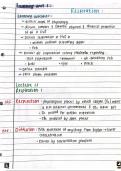
-
Respiration
- Summary • 7 pages • 2023
- Available in package deal
-
 jennikalorist
jennikalorist
-
- R85,00
- + learn more
Learning unit 1.1 covers the basic knowledge about respiration. It explains greenhouse gases, as well as Henry's law and how to use Henry's law to do equations.
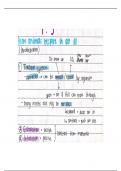
-
How animals respire.
- Summary • 6 pages • 2023
- Available in package deal
-
 jennikalorist
jennikalorist
-
- R85,00
- + learn more
ZOL2601 is all about comparative animal physiology. It covers the difference how aquatic animals respire and how terrestrial animals respire, this include the important respiratory organs and how they function. Learning unit 1 also explains how some animals respire through their skin. This is what learning unit 1 is about (lecture 1.1 - lecture 1.5)

Do you wonder why so many students wear nice clothes, have money to spare and enjoy tons of free time? Well, they sell on Stuvia! Imagine your study notes being downloaded a dozen times for R250 each. Every. Single. Day. Discover all about earning on Stuvia


